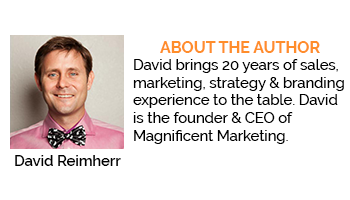The Importance of Building a Connection
With amazing credentials and a stellar reputation, you’d think it’s easy for clients to trust John immediately upon meeting him.
However, trust and comfort are two very different things.
John believes that in order to get amazing shots, it’s important to build a connection and healthy rapport with clients.
Photography isn’t magic – great shots don’t just happen.
As a subject, if you’re working with a photographer that doesn’t make you feel comfortable, the images will reflect that.
John likes to build a nice conversation with lots of back-and-forths to make clients feel as comfortable with him as possible.
This helps with branding as well because it helps give photos a deeper vibe. John mentions that many photographers might be able to capture the right lighting, angle, and create a perfect image, but they lack depth, emotion, and mood.
They don’t accurately represent a brand – they're just great photos.
John says that photography for branding should visually tell your story. Lifestyle photography for a brand should accomplish two goals. It should:
1. Establish your expertise.
2. Provide value to potential prospects because you solve their pain points.
According to John, it’s so important to find the right photographer who can capture a wide range of emotion: everything from rage-filled rants to celebrating wins.
John’s Unique Approach that Helps Him Deliver Top Results
John points out that every entrepreneur is in a different place and has different needs.
Far too many entrepreneurs and thought leaders select a lifestyle portrait photographer based on their price tag and portfolio. While the photographer’s work should speak for itself, it’s also important to get along with one another.
A lot of times, a client may not realize what they want until they’re sitting at home looking at the photos later. John’s job as a photographer is to really get to know his clients and ask a lot of questions to figure out where they’re at with their business.
From there, he can maximize the effectiveness of every session.
It’s hard to pinpoint exactly which questions John might ask to get to know a person because it varies so much. Every entrepreneur has a different vision for their brand, a different personality, and their business is at a different place.
John spends a lot of time getting to know his clients before he even picks up any equipment. In fact, sometimes, his interactions with clients last for two and a half hours. This gives John time to identify the different emotions he’ll need to capture and the types of images he will need to shoot.
It’s therefore crucial for a lifestyle portrait photographer to understand how and where entrepreneurs and thought leaders will use these images on social media or other platforms.
John assesses all of this to deliver the best results possible. That’s how he creates lifestyle portraits that visually punctuate for brands.
The Importance of Being Yourself and Not Striving for Perfection
John says that although it sounds trite, it’s important to be yourself and feel comfortable in your own skin.
Yes, we hear this all the time but here’s what it means.
By being himself, John was able to open himself up because he wasn’t afraid to say what’s on his mind. This allows him to produce the best results possible for clients.
Don’t forget to get your back-end strategy in order.
The last thing you need to do is fumble around with your camera because your client will notice. This will kill any momentum you’ve created while building a rapport.
When you treat your equipment like an extension of yourself – and feel comfortable with yourself – your client will feel comfortable too.
In that scenario, everyone wins.
Retouch Your Images – But Strategically
John also points out that his mental health is more important than reaching an unattainable goal. That’s why he abandoned perfection a long time ago – there's no such thing.
So, does John retouch and edit his images?
Yes, but very strategically.
It’s important to remember the entire purpose behind lifestyle portraits for your brand: you want to appear authentic and professional.
In some cases, this might mean erasing a pimple or lightly brushing a wrinkle – but you still want to look like yourself.
The entire goal is to help build trust with your prospects.
You can’t do this if you look a certain way on LinkedIn but a client can’t recognize you when you meet in-person. Because whether or not people realize it on a conscious level, this does diminish trust.



















